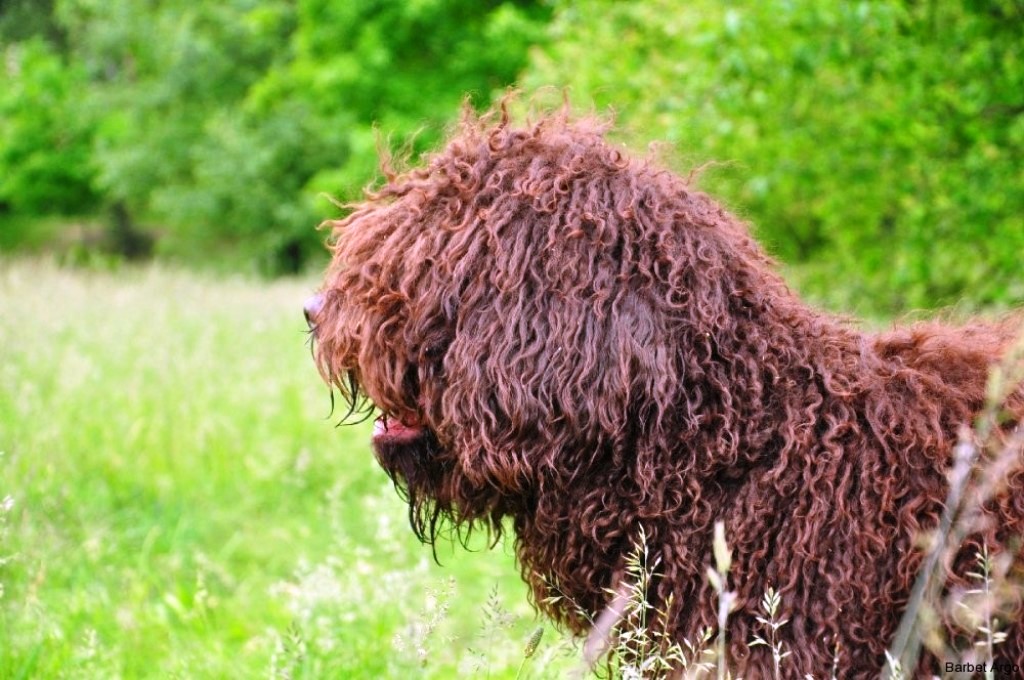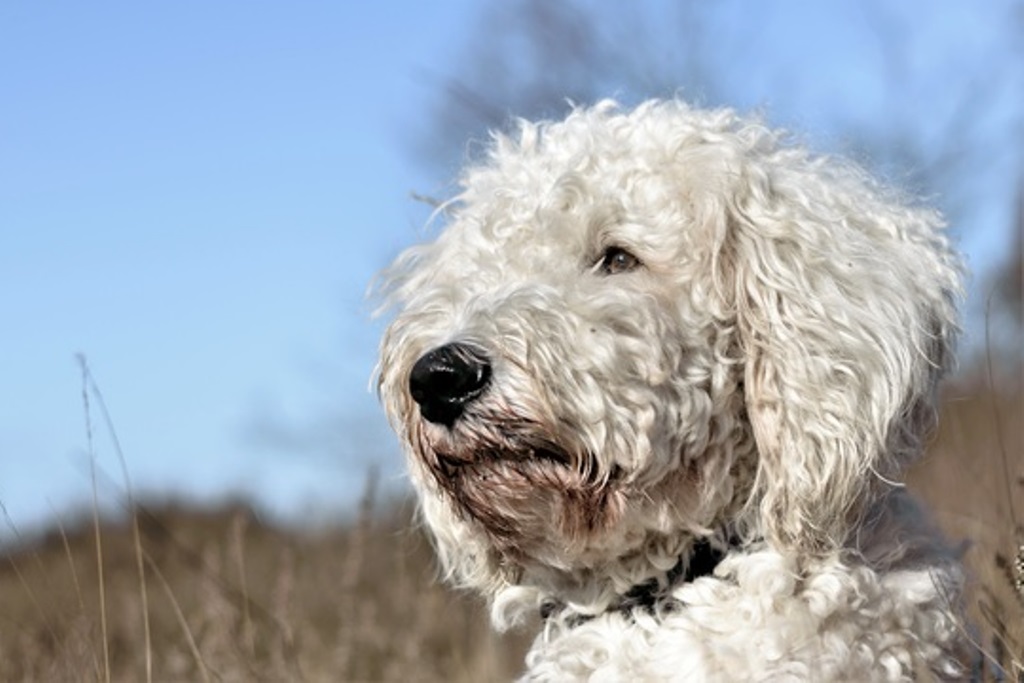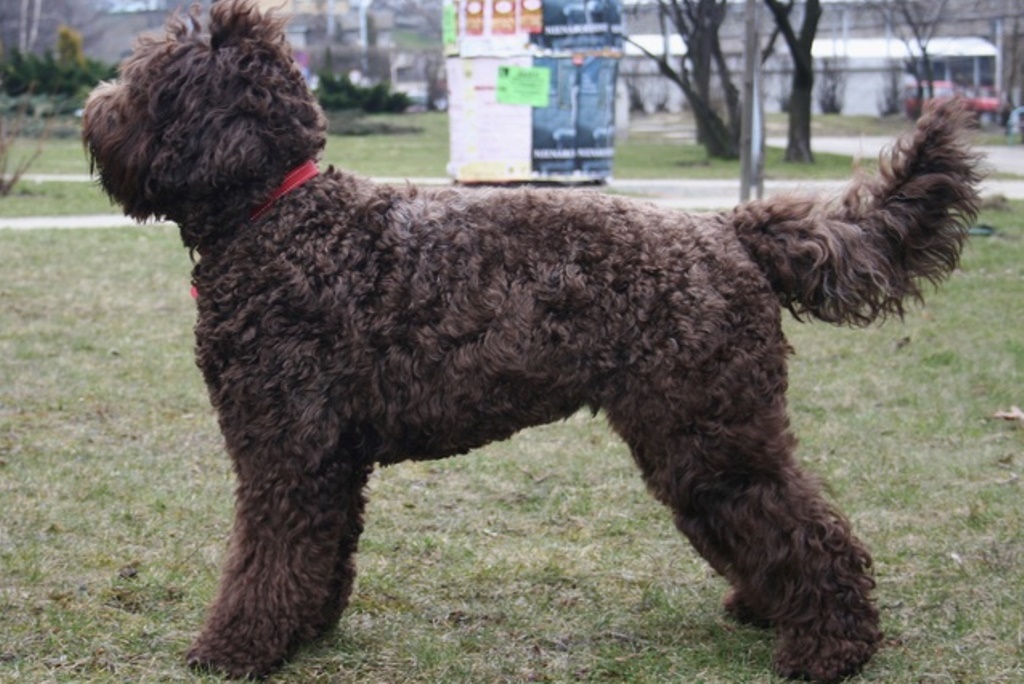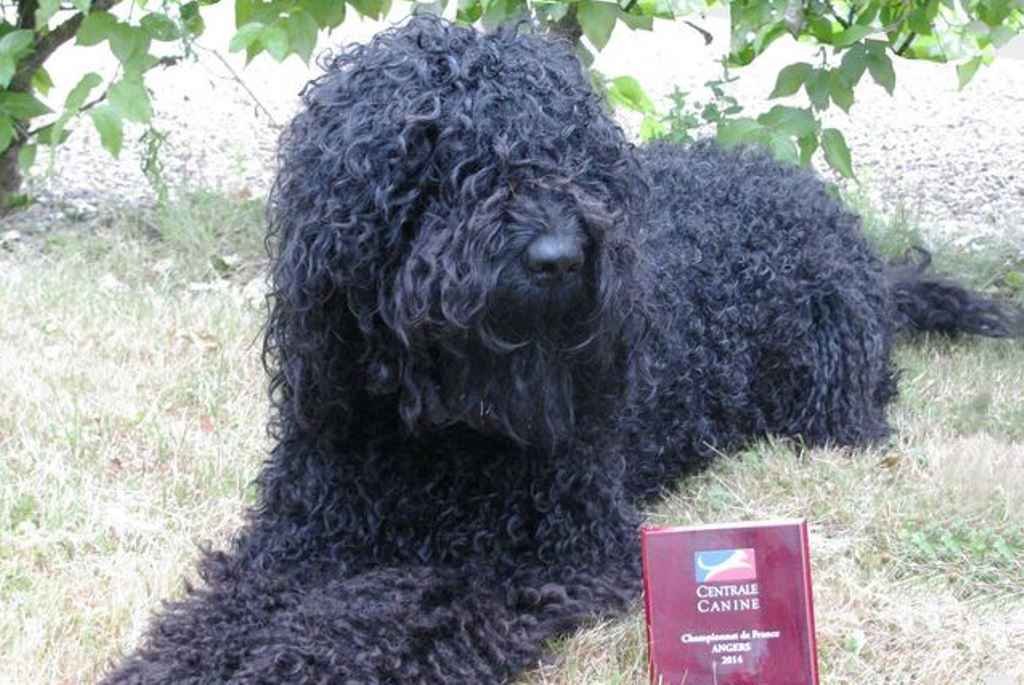
Traits and History of the Barbet Dog Breed
The barbet dog breed was developed in France, but its origins come from further afield. In fact, it is thought to be the dog of the Saracens, who, following wars and invasions, arrived in France from the Iberian Peninsula. It is a very old breed, the first written evidence of its existence dating back to around 1300. It was a Count of Gascony, at that time, who described a dog with a soft, curly coat that was widespread in those days.
It was much used for hunting, especially water hunting, especially ducks, because of its passion for water and swimming. In fact, it is famous for being unbeatable at hunting waterfowl in the marshes, swamps and estuaries of France, where it is well known.
The barbet has also worked on ship companies to hunt and kill rats and other vermin in ships. It has also been very successful as a shepherd dog; this dog is therefore suitable for any type of activity. It has a strong character, a resistant build and a unique spirit of adventure, which drives it to throw itself into all kinds of situations without fear.
His name ‘barbet’ was officially attributed to him by a sixteenth-century dog expert called Fouilloux. He is the ancestor of the poodle.
But the barbet is not only a hunting dog, this dog had access to the prestigious residences of the French upper middle class and thus became a beloved companion dog. A role it still holds, unfortunately it is only known in France, in the rest of the world it is an almost completely unknown breed.
It risked extinction in the world wars and it is thanks to Helene Petre, daughter of Dr Vincenti, who, in 1970 in France, decided to resume breeding the breed in her kennel with a few barbets that were descendants of her father's mas dela chapelle.
Character of the barbet dog breed

The barbet is easy to love, very attached to his family, distinguished by his devotion to his caregiver, but dispenses love and cuddles to anyone who shows him affection. He is the ideal dog for children because he never tires of playing, without ever being aggressive or violent in any way.
He needs constant company, because he does not like to be put in a corner, but wants to be included in every activity of his family group, prefers to be the centre of attention and proves himself suitable for every task, be it companionship, guarding, playing or whatever.
He suffers a lot from loneliness, and if left alone a lot he could make little disasters in the house or garden. It also lives happily in a flat, and even with elderly people, the important thing is that it has at least two or three outings a day, as it loves exercise and playing in the park.
Every now and then you should also take him to a river, lake or sea; he loves water and enjoys swimming immensely.
It is a rustic and rather hardy breed, especially in the cold, but adapts well to all kinds of weather conditions. It is also a fairly intelligent and cunning breed. It trains easily, but must be socialised from an early age, although it gets along well with both dogs and cats and other pets.
With strangers it is not aggressive, but is an excellent alert dog and is very courageous, if need be, it will try to defend its family.
Appearance of the barbet dog breed

The barbet is a medium-sized dog, morphologically falling within the Braccoid breed. Its height at withers reaches 58 to 63 centimetres and its weight ranges from 20 to 30 kilograms, the female usually a little less.
It is a dog with both good musculature and good bone structure. It has a short but strong neck that attaches to sloping shoulders, the paws are straight and muscular with wide, round feet covered in thick hair that makes them webbed. The tail is low and forms a small hook at the end.
The head of the barbet is broad and round, the muzzle is square and short with a nice moustache and long hair beard covering the lips and muzzle. The truffle is black in colour. The eyes are round, lively and very intelligent, covered by long, thick eyebrows that fall over the nasal passage and are almost always covered. The ears, on the other hand, are positioned very low and are almost invisible as they are wrapped in fur.
But the barbet's main characteristic is its coat. The entire body is uniformly covered with a large amount of thick, curly, wavy and soft fur consisting of larger and smaller curls. Generally, the coat is solid-coloured, black, grey, hazel, brown, fawn, white, but may also be spotted with white spots on the chest and paws. Its coat is waterproof and allows it to swim for long periods even in icy waters without any problems.
Care and health of the barbet dog breed

The barbet is a robust and rustic dog with a life expectancy of 12 to 15 years.
It can, however, suffer from epilepsy, hernias, limb dysplasia, diseases common to many dog breeds. The barbet's ears, which are abundantly covered in fur, need special attention to prevent them from catching an ear infection, which is very common for this breed.
As for the care of the coat, it is good to brush it daily to avoid knots and depending on the activities it performs, more frequent bathing than usual may be necessary. They do not moult, so they hardly lose any hair, and as they do not have many allergen cells, they are counted among the hypoallergenic breeds.
They can tolerate cold and humidity perfectly well, whereas one must be careful of excessive heat.
As far as nutrition is concerned, it is a sporty dog that does not put on weight if it gets the right daily exercise.






















